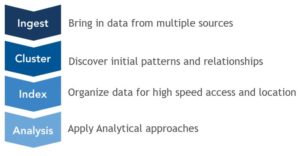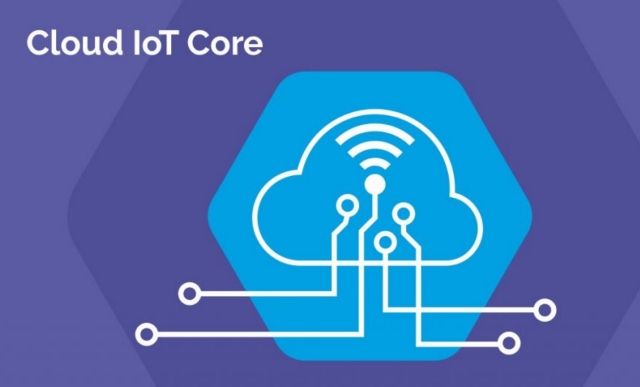IoT Enabled Predictive Logistics Platforms
Meet the Experts
By Kumar Singh, Research Director, SAPinsider
IoT technologies are predicted to generate a massive amount of data when leveraged at an industrial scale in supply chains. Using IoT technology to gain competitive advantage is actually not just about the data but more about how you leverage all that data being collected. Advancements in technology and computing now allow you to do much more with the “Big Data” that your IoT network will generate. Now, we will explore one such example of how you can build a predictive logistics platform using IoT-generated data.
Concept: At a high level, the concept or the architecture is not complex. Transportation assets (which could be trucks, trains, intermodal containers, ocean containers, temperature-controlled shippers, etc.) are fitted with the Internet of Things (IoT) devices that relay the data to a central point where all the data is collected. This data can be then put to use in various ways. The purpose of this post is to discuss the setup in detail and understand how the data can be used for building a predictive logistics platform. Of course, there are futuristic versions of these platforms but we are definitely not there yet. Having this version as a foundation will provide you the capability to scale up to the predictive logistics X.0 when the time comes.
Explore related questions
The Prerequisites- Building the Foundation
So now that we know what the high-level concept of IoT-enabled transportation network is, let us explore, without going into too much technical jargon, what type of capabilities are needed to develop this type of platform. Capabilities defined in this section are introductory to keep things simple, but feel free to reach out if you need detailed architecture diagrams. The various elements of the high-level architecture are shown in the illustration below. Note that the data flow is unidirectional in the illustration just to show how data lands in the platform environment. Smart networks generally allow bidirectional data flow.
Investing in this type of platform makes sense only if your business model is Logistics heavy (large retailers, Distributors, Transportation services providers etc.) or you are a transportation optimization products company looking to launch a product that aligns with the AI and ML trend.

Building Infrastructure that will Generate Real-Time Data
A classic example is fitting your assets and goods in transit with IoT devices that can relay the data. The type of data relayed can vary, but the most basic can be telematics data that relays the geolocation of assets. Examples of advanced forms can be asset condition (engine temp, speed etc.) and pallet/container condition (temperature of a refrigerated container)
Investing in an IoT Hub
IoT hub is a managed service hosted in the cloud that acts as a central message hub for bi-directional communication between your IoT application and the devices it manages. You can connect virtually any device to IoT hub. IoT hub supports communications both from the device to the cloud and from the cloud to the device. An example of cloud IoT hub services is AWS.
Building an Internal Platform
There are three core aspects of an internal platform:
- Data Lake: A data pool where all the data collected by the IoT hub will be dumped
- The Analytics platform: The platform that will leverage the data on the data lake and run models on the data
- Data Consumer interfaces: Interfaces built for the end-users of data and analysis results
The Data Journey
At a high level, the steps of processing data in cloud-based analytics are shown below:

Leveraging the Data Beyond Track and Trace
Leveraging data from sensors within transportation space is not cutting edge anymore. However, the organizations that have currently started piloting this technology intend to use the data generated mainly to:
- Provides users with real-time tracking of their shipments around the world
- Performance insights (KPIs and Metrics)
- Alerts notifying them of risks
The key is to use the data beyond the normal track and trace and use the massive amount of data being collected to apply advanced analytics methodologies to gain a competitive edge.
Accurate Predicted Times of Arrival at Every Node in the Supply Chain
This functionality, if developed properly can be a game-changer. The range of algorithms that can be used is wide. It can be a simple heuristic algorithm that divides each route for each transportation asset into zones and leverage the historical time that the asset was in each of those zones, using algorithms like a random forest to forecast predicted arrival time. On the extreme side, researchers have used artificial neural networks in predicting arrival times. Experiment to understand what works better.
Researchers at Beijing University developed 3 ANN models to make the travel time prediction of ground transportation, two of which predict whole route travel time and the third is to predict segment of route travel time. All three models use a three-layer neural network, with a different number of input and hidden units. The first model predicts the whole route travel time with features computed directly from truck GPS data and prior knowledge, the second model predicts the segment of route travel time with preceding truck information and the last model predicts the whole route travel time by combining predictions of segments.
Prescriptive Actions to Optimize Supply Chain Performance
The data generated and collected gives you a network view of your supply chain, which can then be leveraged to run supply chain network optimization studies. You can run optimization scenarios in real-time when you foresee potential disruptions happening in your supply chain. This tool is a must-have in your supply chain control towers in the near future if you have a supply chain network that is logistics and transportation heavy. It may not be too late to start thinking in this direction and create a competitive advantage early on.









